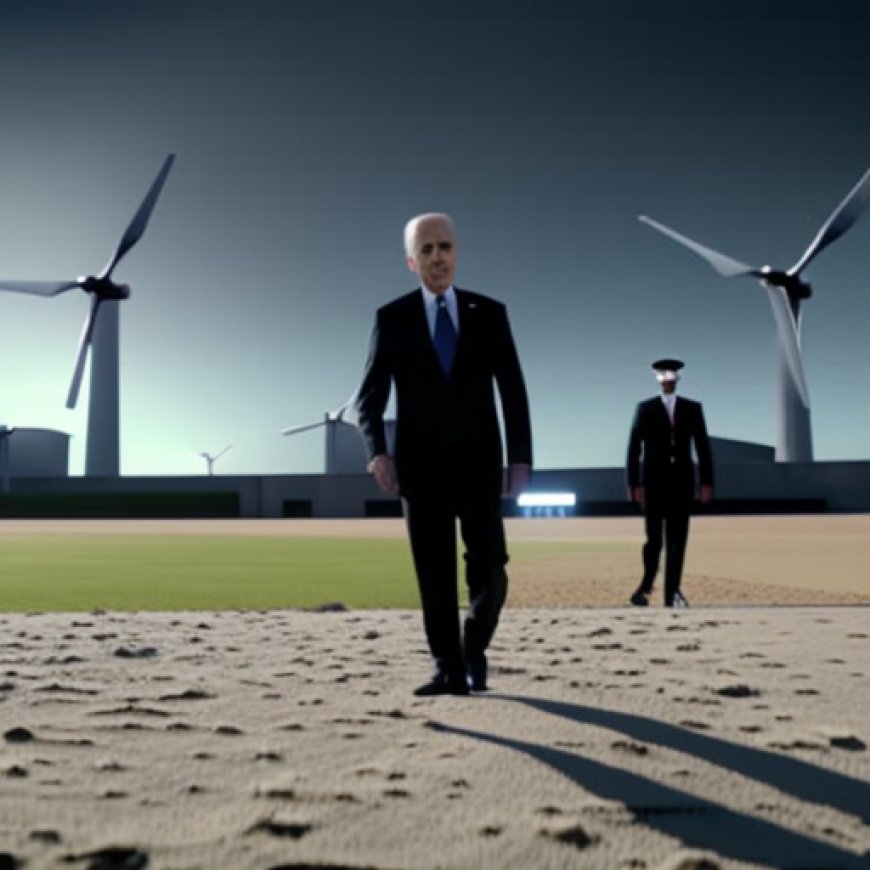Biden administration to transform Pentagon with new clean energy plan: ‘An uninterrupted power source’
Biden administration to transform Pentagon with new clean energy plan: 'An uninterrupted power source' The Cool Down


The United States Military to Install Solar Panels on the Pentagon
The United States military is one of the largest polluters in the world, as researchers have noted, though it is seldom talked about in those terms. Now, that organization’s headquarters are about to become a bit more environmentally friendly as the federal government is set to allocate $104 million in grants to install solar panels on the Pentagon.
Solar Panels and Other Upgrades
The solar panels will provide “an uninterrupted power source,” assistant secretary of Defense for energy, installations, and environment Brendan Owens said, per the Associated Press. In addition to the solar panels, the Pentagon will also be receiving a heat pump system, as well as thermally efficient windows.
The changes are expected to double the amount of carbon-free electricity at federal facilities. With money from the grants, energy upgrades will also be made at naval bases in Georgia and Washington state, in addition to the Naval Support Activity Mid-South in Tennessee.
Emphasis on Sustainable Development Goals (SDGs)
All of these upgrades represent a step in the right direction. However, if the U.S. military is truly interested in reducing the harm it does to our planet, there is still work to be done.
According to Oxford University political scientist Neta C. Crawford, who wrote an entire book on the topic, the U.S. Department of Defense is the single largest institutional user of dirty energy in the world.
Since 2001, the military has been responsible for 77% to 80% of all federal energy usage, according to Sen. Edward Markey and U.S. Rep. Mondaire Jones in a 2021 letter to President Joe Biden. And that is to say nothing of the extensive environmental damage caused by the military’s direct operations, from nuclear testing to dropping bombs to poisoning civilians in the proximity of its bases.
Commitment to Clean Energy
“U.S. military emissions are about 51 million metric tons [56 million tons], CO2 equivalent, annually in the last two years [which is] larger than the emissions of most countries,” Crawford told Mother Jones in an interview.
Although the military’s reporting on its own pollution output has been inconsistent, in recent years, some officials have detailed efforts to try to mitigate environmental damage. Now, as the AP noted, these new efforts are in step with Biden’s executive order from 2021 that aims to achieve a “65% reduction in greenhouse gas emissions from federal operations by 2030.”
“The department is committed to meeting the challenge, by making significant changes in our use of energy and increasing our investments in clean energy technology,” Deputy Defense Secretary Kathleen Hicks said in November 2021, per Inside Climate News. “As a nation and a department, we must do our part to mitigate climate change itself.”
SDGs, Targets, and Indicators Analysis
1. Which SDGs are addressed or connected to the issues highlighted in the article?
- SDG 7: Affordable and Clean Energy
- SDG 9: Industry, Innovation, and Infrastructure
- SDG 13: Climate Action
- SDG 15: Life on Land
The article discusses the United States military’s efforts to reduce its environmental impact and transition towards cleaner energy sources. This aligns with SDG 7, which aims to ensure access to affordable, reliable, sustainable, and modern energy for all. It also relates to SDG 9, which focuses on building resilient infrastructure, promoting inclusive and sustainable industrialization, and fostering innovation. Additionally, the article mentions the military’s contribution to greenhouse gas emissions and environmental damage, highlighting the need for climate action (SDG 13) and the protection of terrestrial ecosystems (SDG 15).
2. What specific targets under those SDGs can be identified based on the article’s content?
- SDG 7.2: Increase substantially the share of renewable energy in the global energy mix.
- SDG 9.4: Upgrade infrastructure and retrofit industries to make them sustainable.
- SDG 13.2: Integrate climate change measures into national policies, strategies, and planning.
- SDG 15.5: Take urgent and significant action to reduce degradation of natural habitats.
The article mentions the installation of solar panels and the use of a heat pump system as part of the Pentagon’s efforts to increase its use of renewable energy sources. This aligns with SDG 7.2, which aims to increase the share of renewable energy in the global energy mix. The upgrades to the Pentagon’s infrastructure, including the installation of thermally efficient windows, contribute to SDG 9.4, which focuses on making industries and infrastructure sustainable. The article also emphasizes the need for the military to integrate climate change measures into its policies and planning, addressing SDG 13.2. Lastly, the protection of natural habitats is highlighted as a necessary action, connecting to SDG 15.5.
3. Are there any indicators mentioned or implied in the article that can be used to measure progress towards the identified targets?
- Percentage of energy generated from renewable sources
- Reduction in greenhouse gas emissions
- Number of infrastructure upgrades and retrofits
- Extent of integration of climate change measures into policies and planning
- Extent of reduction in degradation of natural habitats
The article mentions that the installation of solar panels will double the amount of carbon-free electricity at federal facilities, indicating progress towards increasing the share of renewable energy. The reduction in greenhouse gas emissions is also mentioned as a goal in line with President Biden’s executive order. The upgrades to infrastructure, such as the installation of thermally efficient windows, can be measured by the number of retrofits and improvements made. The extent to which climate change measures are integrated into policies and planning can be assessed through policy documents and strategic plans. Lastly, the reduction in degradation of natural habitats can be measured by monitoring changes in biodiversity and ecosystem health.
Table: SDGs, Targets, and Indicators
| SDGs | Targets | Indicators |
|---|---|---|
| SDG 7: Affordable and Clean Energy | 7.2: Increase substantially the share of renewable energy in the global energy mix. | – Percentage of energy generated from renewable sources |
| SDG 9: Industry, Innovation, and Infrastructure | 9.4: Upgrade infrastructure and retrofit industries to make them sustainable. | – Number of infrastructure upgrades and retrofits |
| SDG 13: Climate Action | 13.2: Integrate climate change measures into national policies, strategies, and planning. | – Extent of integration of climate change measures into policies and planning – Reduction in greenhouse gas emissions |
| SDG 15: Life on Land | 15.5: Take urgent and significant action to reduce degradation of natural habitats. | – Extent of reduction in degradation of natural habitats |
Behold! This splendid article springs forth from the wellspring of knowledge, shaped by a wondrous proprietary AI technology that delved into a vast ocean of data, illuminating the path towards the Sustainable Development Goals. Remember that all rights are reserved by SDG Investors LLC, empowering us to champion progress together.
Source: thecooldown.com

Join us, as fellow seekers of change, on a transformative journey at https://sdgtalks.ai/welcome, where you can become a member and actively contribute to shaping a brighter future.







